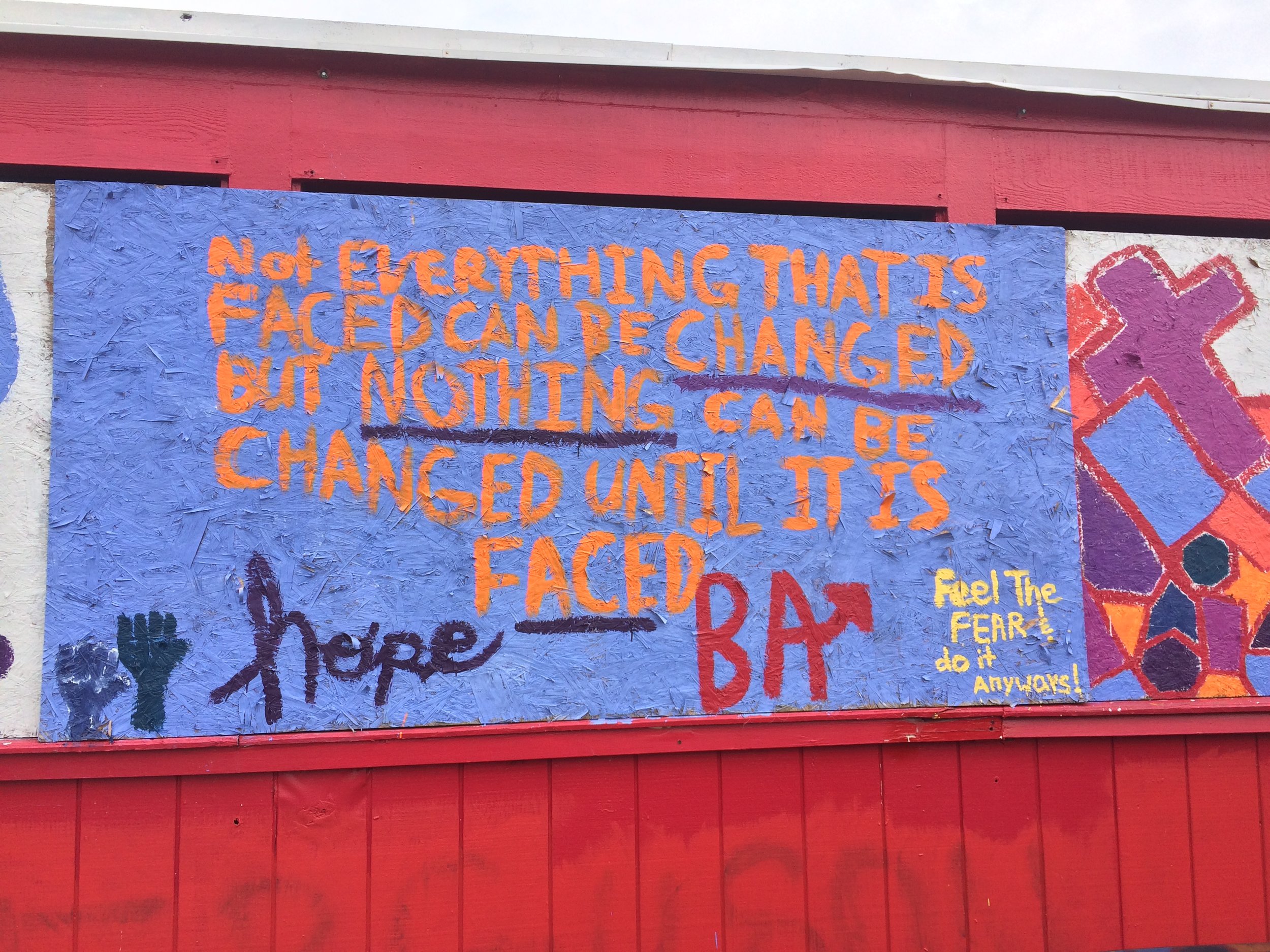Seattle's opportunity gaps are as wide as ever. What will we do now?
/Photo by Matt Halvorson in Ferguson, Mo., August 2015.
So, I know I just spent yesterday writing about Seattle’s beauty, our state’s courageous progress, and activism as love... but now it’s back to reality.
The opportunity gaps in Seattle Public Schools are not closing. We’ve known about them for too long for this to be true. The leaders of our public school system have acknowledged these gaps for too long for the needle to be staying so firmly put.
Claudia Rowe wrote recently for the Seattle Times about the latest wave of data telling us more of what we’ve already known:
"Results released last week underscore the fact that schools need to do much more than measure.
"While graduation rates are up overall and more kids are taking college-level courses, according to the district’s 2016-17 Scorecard, gulfs in achievement between white students and the historically underserved (black, Latino, Native American and Pacific Islander) stretch as wide — or wider — than ever."
I continue to appreciate Rowe’s work shining a light into all corners of Seattle’s educational inequity. Read her full article, which outlines all the specific ways the gaps have not only persisted but grown — or read the report for yourself.
Here’s a spoiler: it’s not a pretty picture. Here's just one example to tickle your outrage bone:
“Perhaps the most troubling number on the district’s entire 52-page scorecard involves Native American students. Fewer than half graduate from Seattle high schools in four years. They were the only student group to drop on that measure.”
What!? On the one hand, that’s shameful. On the other hand, maybe good on that many kids for getting out of a colonial school system that has long been used against indigenous communities as a tool for cultural genocide. Maybe. It's at least hard to say.
But I digress.
Former Seattle School Board member Stephan Blanford, whose reason and commitment to equity will be sorely missed, noted in the article that, “Considering the wealth and resources of this community, we’re not growing at nearly the speed we should be.”
He’s right.
We are not tackling this problem like we really need to solve it. We’re taking it on as though it’s something we really hope to change at some point, but that we know will take time.
That it’s not good enough. It will lead to an endless cycle of more and more of the same. That's what it's already led to so far.
So, what are we going to do differently next year? We know that what we’ve been doing has not been working. It’s been producing massive racial inequity.
We don’t need to place blame. We need to address root causes and find new ways to move forward.
We need our schools to find ways to earn and truly deserve the trust of the families they’ve typically left behind. We need our public schools to earn the presence of our kids in their classrooms. Even if they seem weird. Even if they aren't the way we've always done things.
In Seattle, we need to do better for our kids, whatever it takes. No more politics, no more excuses, no more of the same.
Just knowing we need to do better isn’t enough anymore.
A young man chopping wood shared a piece of wisdom with me last November: “If you see a job that needs to be done,” he said, “then you are the one to do it.”
We know what we know, Seattle. That means the time is now for us to embrace innovation, demand honesty, and hold our schools to the high-as-hell standard our kids deserve.








